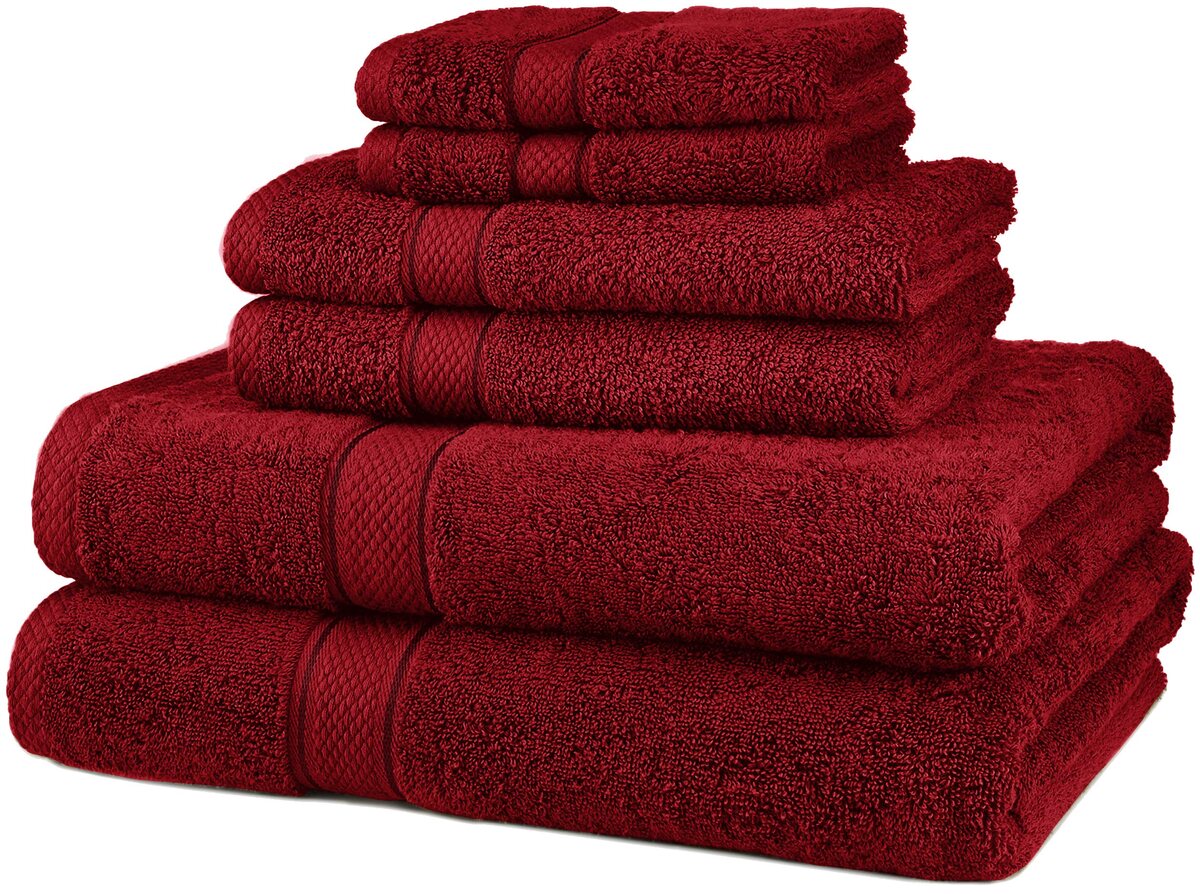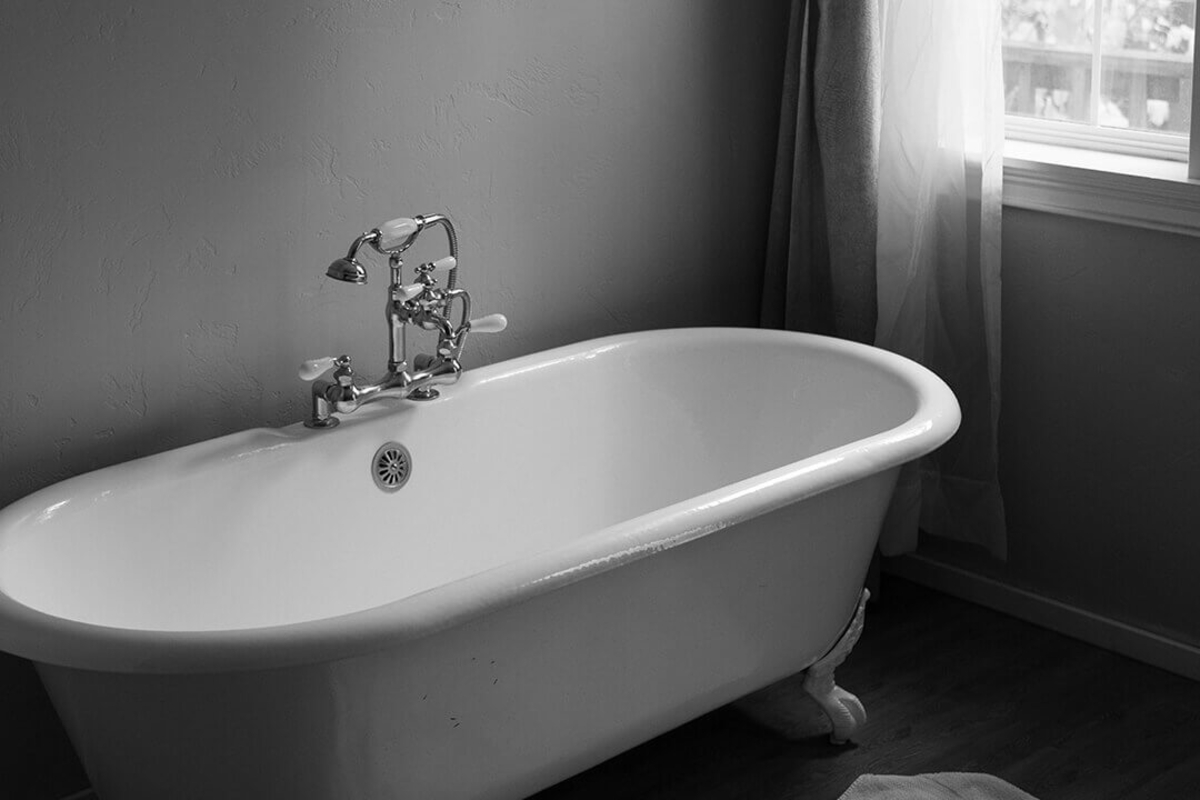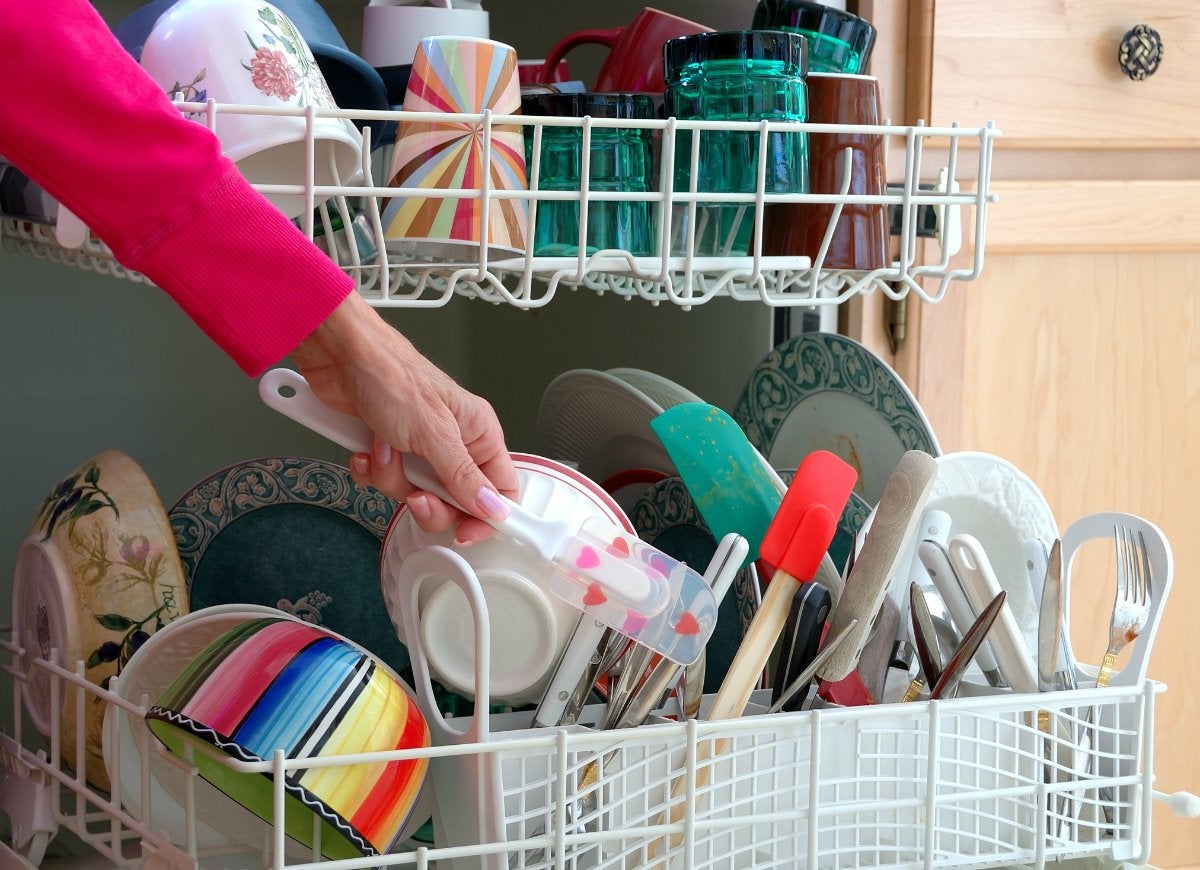Home>Interior Design>Mistakes To Avoid When Washing Whites: What To Do Instead


Interior Design
Mistakes To Avoid When Washing Whites: What To Do Instead
Modified: March 2, 2024
Discover common mistakes to avoid for washing whites and learn what to do instead. Improve your interior design with these expert tips.
(Many of the links in this article redirect to a specific reviewed product. Your purchase of these products through affiliate links helps to generate commission for Storables.com, at no extra cost. Learn more)
Introduction
When it comes to washing whites, many of us have experienced the frustration of seeing our favorite white garments turn dull or yellow over time. This can be especially disheartening when we’ve put effort into selecting and caring for our white clothing, bedding, or towels. However, achieving and maintaining bright and clean whites is not as difficult as it may seem.
In this article, we will explore the common mistakes that people often make when washing whites and provide practical alternatives to help you achieve the best results. By avoiding these pitfalls and following the suggested tips, you can keep your white fabrics looking fresh and vibrant for longer.
Key Takeaways:
- Keep your whites bright by using cold or warm water, sorting properly, and pre-treating stains. Follow care labels, use the right amount of detergent, and explore natural whitening methods for pristine white garments.
- Avoid hot water, overloading the machine, and neglecting to sort properly. Pre-treat stains, use the right amount of detergent, and follow care labels to maintain bright and clean whites.
Mistake 1: Using hot water
One common mistake many people make when washing whites is using hot water. While it may be tempting to crank up the temperature thinking it will help remove stains and kill bacteria, hot water can actually do more harm than good to your white garments.
Hot water can cause certain fabrics, particularly delicate ones like silk or lace, to shrink, fade, or lose their shape. It can also set stains, making them more difficult to remove in future washes. Additionally, using hot water on whites can lead to a grayish or yellowish tint, as it can cause the fabrics to become dingy with time.
Instead of using hot water, opt for cold or warm water when washing your whites. Cold water is particularly effective in preventing colors from bleeding or transferring onto your whites. Some washing machines also have a “whites” or “brights” setting that uses warm water, which can be another suitable option.
By choosing the right water temperature, you can help preserve the integrity and brightness of your white garments, ensuring they stay in pristine condition for longer.
Mistake 2: Overloading the washing machine
Another mistake individuals often make when washing whites is cramming too many garments into the washing machine. While it might seem like a time-saving measure, overloading the machine can negatively impact the cleanliness and overall condition of your white clothes.
When the washing machine is overloaded, there is less space for the water and detergent to circulate, resulting in inadequate cleaning. The clothes may not agitate properly, preventing stains and dirt from being effectively removed.
Furthermore, overloading the machine can cause excessive friction between the fabrics, leading to pilling, tangling, and even tearing. This is especially true for delicate white fabrics that require more gentle handling.
To wash whites effectively, it’s important to give your garments enough space to move freely in the machine. As a general rule, fill the machine to around 80% of its capacity. This allows ample room for effective cleaning and prevents unnecessary wear and tear on the fabrics.
If you have a large load of white laundry to wash, consider dividing it into two cycles to ensure each garment receives proper attention. This may take a bit more time, but it will result in cleaner and better-maintained white clothes in the long run.
Mistake 3: Neglecting to sort properly
Sorting your laundry may seem like an extra step, but it is a crucial one, especially when it comes to washing whites. Neglecting to sort your whites properly can lead to unwanted transfer of color or damage to your precious garments.
One common mistake is throwing all your white clothing together without considering fabric types or care instructions. Mixing different fabrics, such as cotton, polyester, and delicate lace, can result in uneven cleaning and potential damage. For example, rough fabrics like denim can cause friction against delicate whites and lead to abrasion or pilling.
Additionally, failing to separate heavily stained items from lightly soiled ones can result in the spread of stains to other garments during the wash cycle. This can be especially problematic for white clothes, as stains are more visible and challenging to remove.
It is essential to separate your white laundry into different piles based on color intensity, fabric type, and stain level. Sort your garments into categories such as whites, light colors, and heavily soiled items. This practice ensures that similar items are washed together, reducing the risk of color bleeding or fabric damage.
Remember to also read the care labels on your garments. Some white fabrics may require special care, such as hand washing or using a gentle cycle. Following the care instructions will help maintain the quality and longevity of your white clothes.
By taking the time to sort your white laundry properly, you can avoid color transfer, preserve the whiteness of your garments, and ensure effective cleaning for each item.
Mistake 4: Skipping pre-treatment
Skipping pre-treatment is a common mistake that many people make when washing their whites. Pre-treating stains before washing is essential for ensuring that your white garments come out clean and bright.
Stains, such as food spills, sweat, or makeup, can be particularly stubborn on white fabrics and may require extra attention to remove completely. By skipping the pre-treatment step, you risk allowing these stains to set further into the fibers, making them more difficult to remove later.
Pre-treating stains is relatively easy and can make a significant difference in the outcome of your laundry. There are several pre-treatment methods you can try. One option is to apply a stain remover directly to the affected area and gently rub it in using a soft brush or your fingers. Another method is to create a paste using a mixture of water and laundry detergent, then apply it to the stain.
Allow the pre-treatment solution to sit on the stain for a few minutes or even overnight, depending on the severity of the stain. This gives the solution time to penetrate and break down the stain, making it easier to remove during the washing process.
Remember to always test the stain remover or detergent paste on a small and inconspicuous area of the fabric first, to ensure it doesn’t cause any discoloration or damage.
By taking the time to pre-treat stains, you increase the chances of successfully removing them during the wash cycle. This ultimately leads to cleaner, brighter white garments that look fresh and well-maintained.
Read more: Mistakes To Avoid When Building A New House
Mistake 5: Using too much detergent
Using an excessive amount of detergent is a mistake that many people make when washing their whites. While it may seem logical to add more detergent for a better cleaning result, using too much can actually have the opposite effect and negatively impact your white garments.
Using an excessive amount of detergent creates excessive suds, which can prevent the washer from fully rinsing out the soap residue. This can leave a dull, soapy film on your white clothes, making them appear dingy and less vibrant.
Additionally, using too much detergent can lead to a buildup of soap residue in the fibers of your white garments. This buildup can attract dirt and stains, causing your whites to look dull and dirty even after washing.
To ensure the proper amount of detergent is used, read the guidelines on the detergent packaging. Follow the recommended dosage based on the size of your load and the level of soil or stains. In general, using about half the recommended amount of detergent for a standard load of white laundry is sufficient.
If you’re dealing with heavily soiled items, consider pre-soaking them or using a stain remover specifically designed for white clothes. This targeted approach allows you to tackle the stains directly without relying solely on an excessive amount of detergent.
By using the right amount of detergent, you can effectively clean your white garments without leaving behind any residue. This will result in cleaner, brighter whites that maintain their original luster and integrity.
When washing whites, avoid using too much bleach as it can weaken the fabric and cause yellowing. Instead, try using a laundry detergent specifically designed for whites and pre-treating any stains before washing.
Mistake 6: Ignoring care labels
Ignoring care labels is a common mistake that can have detrimental effects when it comes to washing whites. Care labels provide essential information about how to properly care for your garments, including specific instructions for washing, drying, and ironing.
Each white garment may have different fabric compositions and construction, which means they may require specific care to maintain their quality and appearance. Ignoring these guidelines can lead to fabric damage, color fading, or even shrinkage.
When it comes to white fabrics, some may require gentle handling, such as hand-washing or using a delicate cycle, while others may withstand regular machine washing. Some materials may need to be air-dried, while others can tolerate low-heat tumble drying.
It is crucial to pay close attention to the care labels on your white garments and follow the recommended instructions. If there are any symbols or icons you are unsure of, refer to the garment care guide that often comes with the clothing or check online resources for decoding laundry symbols.
By following the care label instructions, you are ensuring that your white garments receive the appropriate care and maintenance they need to stay in optimal condition. This will help preserve their whiteness, prevent damage, and extend their lifespan.
Mistake 7: Leaving stains untreated
Leaving stains untreated is a common mistake that can significantly impact the appearance and cleanliness of your white garments. Whether it’s a coffee spill, a grease stain, or a splash of wine, ignoring stains and allowing them to set can make them more stubborn and difficult to remove.
When white fabrics absorb stains, they become more noticeable due to the contrast with the bright background. Ignoring these stains and washing the garment without treating them can result in the stains becoming embedded in the fibers, making them harder to eradicate.
As soon as a stain occurs, it’s crucial to take immediate action. Blot or gently scrape off any excess substance on the surface of the fabric using a clean cloth or tissue. Avoid rubbing the stain, as it can push it deeper into the fibers or spread it to a larger area.
Once the excess has been removed, apply a stain remover or a mixture of water and gentle detergent directly to the stained area. Allow it to sit for a few minutes, then gently rub the fabric together or use a soft brush to work the solution into the stain.
After treating the stain, check the care label instructions to determine the appropriate washing method for the garment. Laundering the garment as soon as possible after treating the stain will help ensure the best chance of complete removal.
By promptly treating stains on your white garments, you increase the likelihood of achieving clean, pristine whites. This proactive approach will help maintain the overall appearance and extend the life of your white clothing.
Mistake 8: Using bleach excessively
Using bleach excessively is a mistake that many people make when trying to achieve bright, white garments. While bleach can be an effective stain remover and whitening agent, overusing it can cause damage to your white fabrics.
Bleach is a strong chemical that can weaken and deteriorate the fibers of your white garments, especially if they are made of delicate materials such as silk or wool. Prolonged exposure to bleach can lead to fabric thinning, discoloration, and even holes in your clothing.
Furthermore, excessive use of bleach can cause your white clothes to turn yellow over time. This is especially true for fabrics that contain natural fibers like cotton, as the bleach can weaken the fibers and cause them to yellow with repeated use.
Instead of relying solely on bleach to keep your whites bright, consider alternative whitening methods. Oxygen bleach, which contains hydrogen peroxide, can be a gentler option for whitening. It is less harsh on fabrics and can help remove stains and brighten whites without the same risk of damage.
Another alternative is using natural whitening agents such as lemon juice or baking soda. These substances can be added to your laundry detergent to provide whitening properties without the harmful effects of bleach. Additionally, hanging your white garments in the sun can help naturally bleach and brighten them.
It’s important to note that when using bleach, always follow the instructions on the packaging for proper dilution and usage. Avoid pouring bleach directly onto fabrics, as this can lead to spotting and uneven color distribution.
By using bleach sparingly and exploring alternative whitening methods, you can maintain the brightness of your white garments while prolonging their lifespan and minimizing damage.
What to do instead
Now that we’ve covered some common mistakes to avoid when washing whites, let’s discuss what you should do instead to keep your white garments looking their best.
- Check care labels: Always pay attention to the care labels on your white garments. Follow the recommended washing instructions, including water temperature, spin speed, and drying recommendations. This will ensure that your whites are being treated in the best possible way.
- Sort properly: Take the time to sort your white laundry, separating heavily soiled items from lightly soiled ones. Sort by color intensity and fabric type, ensuring similar items are washed together. This will prevent color bleeding and fabric damage.
- Pre-treat stains: Treat stains as soon as they occur. Blot or scrape off any excess substance, then apply a stain remover or a mixture of water and detergent directly to the stained area. Allow it to sit for a few minutes before washing.
- Use the right amount of detergent: Follow the recommended dosage of detergent based on the size of your load and level of soil. Avoid using excessive amounts, as this can lead to soap residue buildup and dullness in your whites.
- Choose the right water temperature: Opt for cold or warm water when washing whites. Cold water helps prevent color bleeding, while warm water can be suitable for heavily soiled items. Avoid using hot water, as it can cause fabric damage and fading.
- Gently handle delicate fabrics: If you have delicate white fabrics, such as silk or lace, consider using a delicate cycle or hand-washing them. Avoid harsh agitation and opt for gentle detergents specifically formulated for delicate fabrics.
- Don’t forget to dry properly: Read the care labels to determine the appropriate drying method. Some white fabrics may require air-drying, while others can tolerate low-heat tumble drying. Avoid excessive heat, as it can shrink or damage certain fabrics.
- Consider natural whitening methods: Instead of relying solely on bleach, try alternative whitening methods. Oxygen bleach, lemon juice, or baking soda can help remove stains and brighten whites without the harsh effects of bleach.
By following these guidelines, you can ensure that your white garments stay clean, bright, and in excellent condition. Implementing these tips into your laundry routine will help you maintain the longevity and vibrancy of your beloved white clothes.
Conclusion
Achieving and maintaining bright and clean whites is not as challenging as it may seem. By avoiding common mistakes and implementing the right strategies, you can keep your white garments looking fresh and vibrant.
Remember to use the appropriate water temperature, avoiding hot water that can damage fabrics and cause discoloration. Avoid overloading the washing machine to ensure proper cleaning and prevent damage to your white clothes.
Take the time to sort your white laundry properly, separating different fabrics and heavily soiled items. This will prevent color bleeding and ensure each garment receives the care it needs.
Don’t skip the pre-treatment step when dealing with stains. Treating stains as soon as they happen will increase the chances of successful removal and preserve the cleanliness of your whites.
Use the recommended amount of detergent to avoid soap residue buildup and maintain the brightness of your whites. Follow the care label instructions on your garments to ensure proper cleaning and maintenance.
While bleach can be effective for whitening, avoid excessive use to prevent damage to your white fabrics. Explore alternative whitening methods and be mindful of the proper dilution and usage instructions.
By implementing these tips and techniques, you can achieve and maintain bright, clean, and long-lasting white garments. Enjoy the confidence and elegance that come with wearing perfectly white clothes!
Frequently Asked Questions about Mistakes To Avoid When Washing Whites: What To Do Instead
Was this page helpful?
At Storables.com, we guarantee accurate and reliable information. Our content, validated by Expert Board Contributors, is crafted following stringent Editorial Policies. We're committed to providing you with well-researched, expert-backed insights for all your informational needs.














0 thoughts on “Mistakes To Avoid When Washing Whites: What To Do Instead”